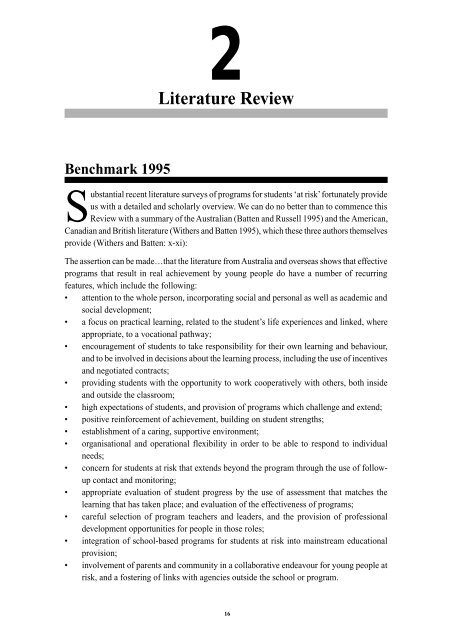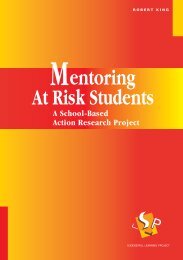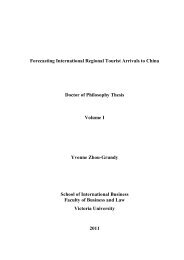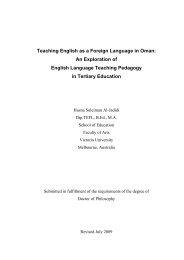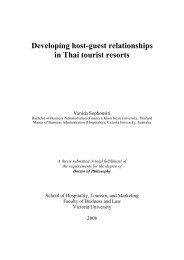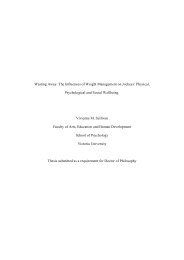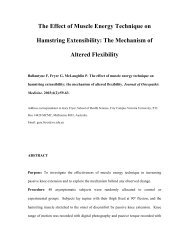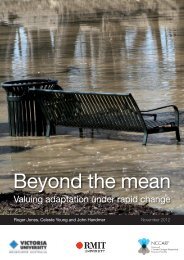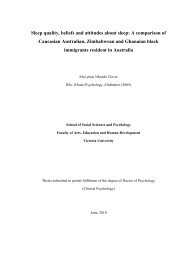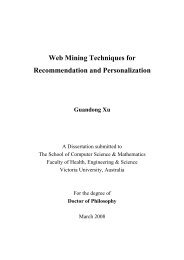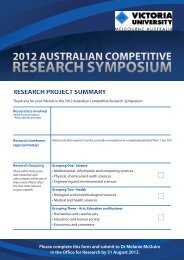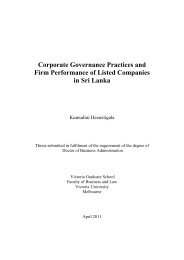Providing Education and Training for At Risk ... - Victoria University
Providing Education and Training for At Risk ... - Victoria University
Providing Education and Training for At Risk ... - Victoria University
- No tags were found...
Create successful ePaper yourself
Turn your PDF publications into a flip-book with our unique Google optimized e-Paper software.
2Literature ReviewBenchmark 1995Substantial recent literature surveys of programs <strong>for</strong> students ‘at risk’ <strong>for</strong>tunately provideus with a detailed <strong>and</strong> scholarly overview. We can do no better than to commence thisReview with a summary of the Australian (Batten <strong>and</strong> Russell 1995) <strong>and</strong> the American,Canadian <strong>and</strong> British literature (Withers <strong>and</strong> Batten 1995), which these three authors themselvesprovide (Withers <strong>and</strong> Batten: x-xi):The assertion can be made…that the literature from Australia <strong>and</strong> overseas shows that effectiveprograms that result in real achievement by young people do have a number of recurringfeatures, which include the following:• attention to the whole person, incorporating social <strong>and</strong> personal as well as academic <strong>and</strong>social development;• a focus on practical learning, related to the student’s life experiences <strong>and</strong> linked, whereappropriate, to a vocational pathway;• encouragement of students to take responsibility <strong>for</strong> their own learning <strong>and</strong> behaviour,<strong>and</strong> to be involved in decisions about the learning process, including the use of incentives<strong>and</strong> negotiated contracts;• providing students with the opportunity to work cooperatively with others, both inside<strong>and</strong> outside the classroom;• high expectations of students, <strong>and</strong> provision of programs which challenge <strong>and</strong> extend;• positive rein<strong>for</strong>cement of achievement, building on student strengths;• establishment of a caring, supportive environment;• organisational <strong>and</strong> operational flexibility in order to be able to respond to individualneeds;• concern <strong>for</strong> students at risk that extends beyond the program through the use of followupcontact <strong>and</strong> monitoring;• appropriate evaluation of student progress by the use of assessment that matches thelearning that has taken place; <strong>and</strong> evaluation of the effectiveness of programs;• careful selection of program teachers <strong>and</strong> leaders, <strong>and</strong> the provision of professionaldevelopment opportunities <strong>for</strong> people in those roles;• integration of school-based programs <strong>for</strong> students at risk into mainstream educationalprovision;• involvement of parents <strong>and</strong> community in a collaborative endeavour <strong>for</strong> young people atrisk, <strong>and</strong> a fostering of links with agencies outside the school or program.16


